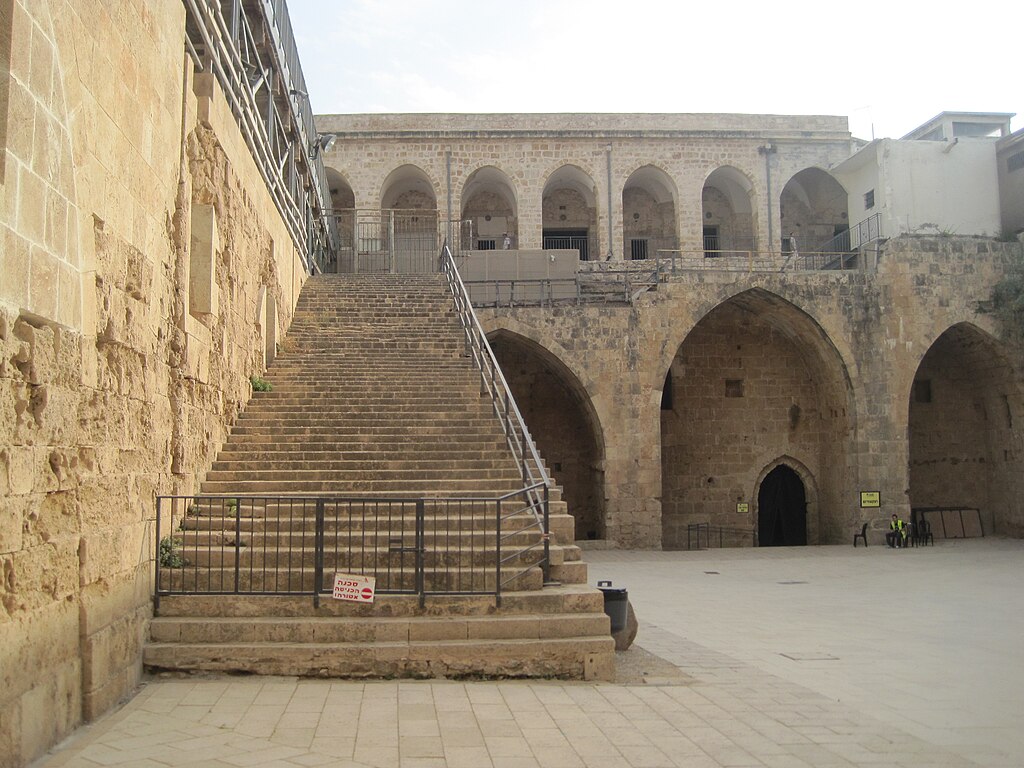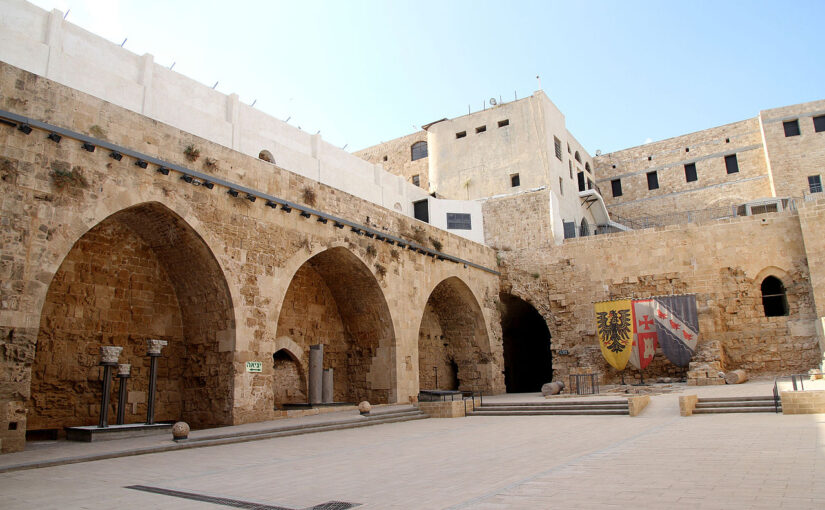Nestled on the sparkling Mediterranean coast, Acre (locally known as Akko) basks in the warm sun of northern Israel. The city sits on a peninsula fringed by blue waters, its skyline rising above fishing boats and the rustle of palm leaves. Here, ancient stone walls meet vibrant markets, and every street seems to hum with tales of centuries long past. The coastline around Acre is generous and golden, with sunsets that sweep the old city in hues of amber and rose. For the visitor, there is beauty in the thriving port, in the bustle of bazaars, and especially in the shadows and grandeur of the fortress that stands as Acre’s proudest landmark.
As the waves sweep in from the Mediterranean, they have carried to Acre myriad peoples and powers, from Canaanites and Phoenicians to Romans, Crusaders, Ottomans, and modern Israelis. Yet, it is the age of the Crusaders that most powerfully shaped the city’s imposing fortress and labyrinthine heart. The walls of Acre are more than stone defenses. These walls are layered with the ambitions, battles, and dreams of empires.
Acre’s rise as a Crusader stronghold began in 1104, when Baldwin I of Jerusalem captured the city with help from a Genoese fleet. With Jerusalem as the goal and Acre as a secure port, the Crusaders anchored their ambitions to the coast. The fortress soon grew. It swelled with guilds, knights, and traders seeking prosperity in the Levant. Over time, the city became not just a bulwark but the beating heart of the Crusader Kingdom. The city vibrated with faith, commerce, and rivalry.
Among the fortress’s most compelling chapters is the story of the Knights Hospitaller, the famed military-monastic order. Their headquarters became the very soul of Crusader Acre. Expanding their command from 1191 onward, the Hospitallers fashioned a complex of thick-walled halls, shadowy chambers, courtyards, and underground tunnels. History lingers in these subterranean arches. Once, these arches echoed with the sounds of armor, urgent whispers, and medieval lives. Within these stone labyrinths, the order provided care for the sick, harbored pilgrims, and managed the defense of the kingdom itself.

Key figures wove themselves into the city’s story. Guy de Lusignan and Henry of Champagne, rulers after the fall of Jerusalem, granted the Hospitallers privileges and responsibilities. These privileges expanded both their power and Acre’s fortifications. The Templars, too, maintained their own fortress nearby, so the city pulsed with tension between orders and ambitions. Later, after Saladin’s forces captured Jerusalem, Acre shone as a beacon of hope. It became the last remaining bastion of Crusader rule in the Holy Land.
The fortress was not passive. Its walls and towers faced relentless sieges, most famously from Sultan Saladin’s army and, centuries later, from none other than Napoleon Bonaparte. In 1799, Acre’s defenders, commanded by Ahmed al-Jazzar with British assistance, repelled Napoleon’s modern cannons. The walls survived, as they always had. These walls stand as a testament to both their builders’ skill and the city’s destiny as a crossroads of civilizations. Cannon still stand sentry on the ramparts. They remind visitors that Acre’s stones were cast in the fires of combat.
Architecturally, Acre Fortress dazzles visitors and historians alike. Above ground, one finds immense ramparts, bastions, towers, and the remnants of formidable gates. Two gates face the land, allowing for trade and defense. Others gaze out toward the sea, opening onto the vital harbor. Landmarks like the Vineyard Tower and Cannon Promenade offer sweeping views over Haifa Bay and the sunlit Mediterranean. Below today’s streets, the layout retains the signature features of a Crusader capital. There are vast halls propped by Gothic arches, stone-paved passages, refectories, courtyards, and even a secret tunnel once used by Templar knights to flee or maneuver under siege.
For centuries, the fortress was the life-blood of Acre. Merchants flocked here, their wares stacked high in the khans and markets. Pilgrims passed through, grateful for the shelter. Local artisans made use of water systems and wells that showed advanced medieval engineering. When the Crusaders lost Acre in 1291 after a siege by Mamluk forces, it was a profound turning point for both East and West. The sudden, violent destruction of the city left behind well-preserved ruins and layers of artifacts. Archaeologists still unearth these treasures, finding a time capsule brimming with clues to the people and drama of medieval life.
Yet, Acre’s legacy did not vanish with the Crusaders. Later rulers, Ottomans, British, and modern Israelis, left their own marks. All of them showed deference to the endurance of its stones. Today, Acre’s fortress is recognized as a UNESCO World Heritage Site. It stands not only as a monument to vanished empires but as a living center for commerce, culture, and faith. The old city’s bazaars are alive with color and clamor. Its synagogues, mosques, and churches recall centuries of shared and disputed history. Museums, like the Treasures in the Walls, showcase artifacts recovered from battle-scarred quarters and peaceful homes alike.
To wander the halls of Acre Fortress is to walk inside history’s giant heart. The city’s shifting light finds its way into the Knights’ Halls, illuminating Gothic columns and weathered capitals. The distant cries of fishermen on the marina blend with imagined shouts of sentries from centuries ago. Evening brings a hush to the ramparts, as the sun rests across the bay, reminding every traveler that these stones have seen the rise and fall of kingdoms.
There is magic here that goes beyond the structure itself. Acre offers a unique blend of sea and stone, presenting a place where every footstep can become a journey across eight centuries. The fortress is not only a symbol of battle and power, but of persistence, adaptation, and multicultural story. It is a destination for lovers of history, architecture, and vibrant local cultures. This is a site where curiosity is always rewarded with new discoveries.
Header image by Maya-Anaïs Yataghène.
If our work has inspired you, helped you grow, or simply brought a little warmth to your day, consider supporting Thalysia.com with a small donation. Your contribution helps us continue exploring ancient landscapes, documenting local traditions, and celebrating the art of living well.
